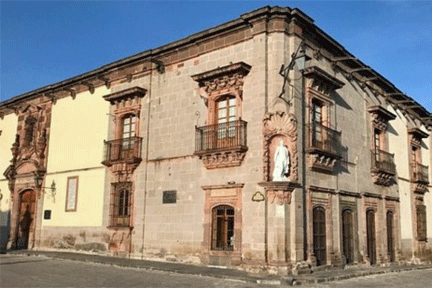A walk through the Casa de Allende Museum
News Category: News and Community News
-
By Rodrigo Diaz Guerrero
I read somewhere that Hemingway recommended that we never stop being a tourist in our own city. To reconquer and marvel at the place where we reside is to agree with the spirits that protect it. Many times, daily life and routines deprive us of the details that enrich our days, and we forget those important things that made us stay—or return. Such is the case for many of us who are here in our beloved San Miguel, and we process this like looking at old photographs forgotten in some dresser drawer. That is why I am proposing some short routes, to dust off the magic of our home.
Without a doubt, walking through the center without a rush in the morning is one of the greatest privileges the city offers. We recommend that after a few blocks of walking, you stop for breakfast at El Rincón de Don Tomás, a place of tradition in the heart of San Miguel, under the Guadalupe portal. Our suggestion is Otomí eggs, a delicious original breakfast with ingredients from the region. On the opposite corner, as every good resident knows, is the Casa de Allende Historical Museum. For a fee of 65 pesos—or free if you are old enough to have an INAPAM card—you get access to the old house that was the home of the first conspirator against the Spanish crown. The tour of the rooms is a true journey through time and history.
Here we learn how Ignacio Allende, the national hero, lived; the clothes, objects, and furnishings of the time; and how the independence movement began to take shape. In addition, the museum also houses a new exhibit—the Izcuinapan Regional Archeology Room. This excellent exhibit was made possible by the financial support of several San Miguel families and Friends of the Museum, and it houses the Miguel Malo Zozaya collection.
Currently, there are around 135 pieces on exhibit presenting evidence of the pre-Hispanic wealth of the Middle Laja region. The new space is arranged in chronological order and divided into different phases. Those are the Chipícuaro, Mixtlán-Morales, San Miguel, and Tierra Blanca. The ceramic pieces and clay deities in red, reddish-brown, and brown tones cover a time range from 600 BCE to the year 1050 CE. If you have yet not visited this, I do not know what you are waiting for.
We close our route with a coffee at another indisputable classic, La Ventana on Sollano Street. You can then return to the Jardin Principal, and while drinking it, you can reflect on our history, origins, and everything that has happened in bringing us to the here and now.


Leave a Reply